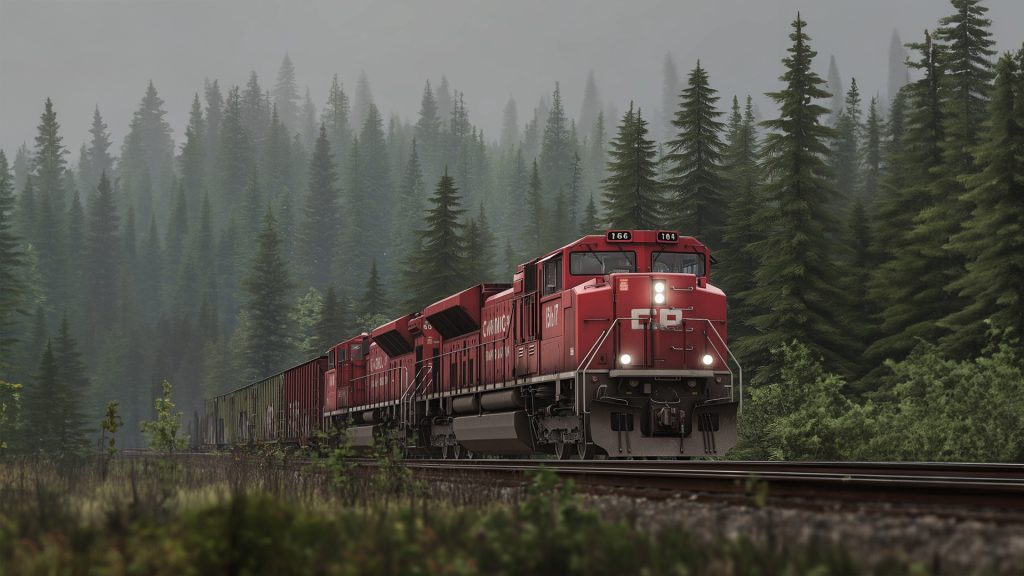
Famous Freight Trains That Keep the World Moving
When most people think of trains, they imagine high-speed passenger rides or historic steam locomotives. But freight trains – the workhorses of the rails – are the real backbone of global commerce. They haul everything from coal and steel to cars and food across continents. As a lifelong train fan, I can tell you there’s something magical about the power of a heavy freight consist thundering down the track at full throttle.
Let’s explore some of the most famous freight trains in the world, their history, technical specs, and why railfans love them.
1. Union Pacific Big Boy – USA
-
Technical Specs: Officially known as the Union Pacific Big Boy 4-8-8-4 Steam Locomotive – 132 feet long, weighing over 1.2 million pounds with tender. Articulated wheel arrangement, built for pulling massive freight loads over the Wasatch Mountains.
-
History: Built by ALCO (American Locomotive Company) between 1941-1944. Twenty-five were produced, and No. 4014 has been restored by Union Pacific and operates in excursion service.
-
Why We Love It: Watching a Big Boy in action is like witnessing living history – pure steam power moving thousands of tons of freight.
![]()
2. Trans-Siberian Railway Freight Trains – Russia
-
Technical Specs: Some of the longest regularly scheduled freight trains in the world – over 2 km long. Locomotives include VL80 electric and 2TE10 diesel-electric units built to handle extreme cold.
-
History: Freight operations began in 1916 when the Trans-Siberian was completed. Today, it moves oil, coal, and containers between Moscow and Vladivostok over 9,200 km.
-
Why We Love It: It’s the ultimate endurance test for both machine and crew, crossing seven time zones through snow, taiga, and mountains.
![]()
3. Indian Railways Dedicated Freight Corridors – India
-
Technical Specs: Double-stack container trains with WAG-12 electric locomotives, hauling over 4,000 tons per trip.
-
History: The Dedicated Freight Corridor Corporation of India (DFCCIL) is building new east and west corridors – the biggest freight upgrade since independence.
-
Why We Love It: Double-stack container trains look like a rolling wall of cargo – a sight every railfan should experience at least once.
![]()
4. BNSF Railway Grain Unit Trains – USA
-
Technical Specs: 100+ car grain trains hauled by GE ES44AC or EMD SD70 locomotives, capable of speeds up to 70 mph.
-
History: BNSF Railway is one of the largest freight carriers in North America and a leader in agricultural shipments.
-
Why We Love It: Seeing three locomotives pulling hard across the plains is a classic American railfan experience.
![]()
5. Rio Tinto and BHP Pilbara Iron Ore Trains – Australia
-
Technical Specs: Among the heaviest and longest trains in the world – some over 7.5 km long with 300+ wagons, hauled by multiple GE ES44ACi and EMD SD70ACe locomotives.
-
History: Built in the 1960s to move iron ore from remote Pilbara mines to port facilities. Rio Tinto now even operates fully autonomous trains under the AutoHaul program.
-
Why We Love It: The scale is jaw-dropping – thousands of tons of iron ore snaking through the desert behind a fleet of massive locomotives.
![]()
6. Canadian Pacific and Canadian National Mixed Freights – Canada
-
Technical Specs: Locomotives like the EMD SD70ACU and GE ES44AC haul long mixed freights and intermodal consists through harsh climates and mountain grades.
-
History: CP and CN have been vital in uniting Canada since the late 1800s, moving grain, lumber, and manufactured goods coast to coast.
-
Why We Love It: Watching CP or CN trains tackle the Canadian Rockies is one of the most beautiful sights in railroading.
![]()
7. Sishen–Saldanha Iron Ore Line Freight Trains – South Africa
-
Technical Specs: Electric heavy-haul trains over 3.7 km long, with distributed power using multiple Class 15E locomotives.
-
History: Built in the 1970s to transport iron ore from the Sishen mine to Saldanha Bay for export, it remains one of the world’s great heavy-haul railways.
-
Why We Love It: These are some of the most powerful freight trains on Earth – a must-see for any heavy-rail enthusiast.
![]()
Why Freight Trains Matter
Freight trains are up to four times more fuel-efficient than trucks, reducing highway congestion and lowering emissions. They’re a key player in sustainable logistics – and for railfans, they represent raw, uncompromising railroading power.
FAQ: Famous Freight Trains
Q: What is the heaviest train ever operated?
A: The heaviest recorded train was a BHP iron ore train in Australia, over 99,000 tons and 7.3 km long.
Q: Why do some freight trains have locomotives in the middle or end?
A: Distributed power helps control braking and traction on very long trains, preventing derailments.
Q: Are freight trains faster than passenger trains?
A: Usually no – most freight trains run 40-70 km/h, but some intermodal freights can reach passenger-like speeds.
Your Turn: Which Freight Train Would You Ride In the Cab?
Would you pick the thundering Big Boy, a Canadian mountain run, or an Australian ore giant?
💬 Tell us in the comments – we’d love to hear from fellow railfans!
🚂 Play the TrainStation Games
Love freight trains? You can collect and operate legendary locomotives in TrainStation 2 – or manage entire rail freight operations in the ultra-realistic TrainStation 3: Journey of Steel.
Follow us on Facebook TrainStation Games or YouTube
